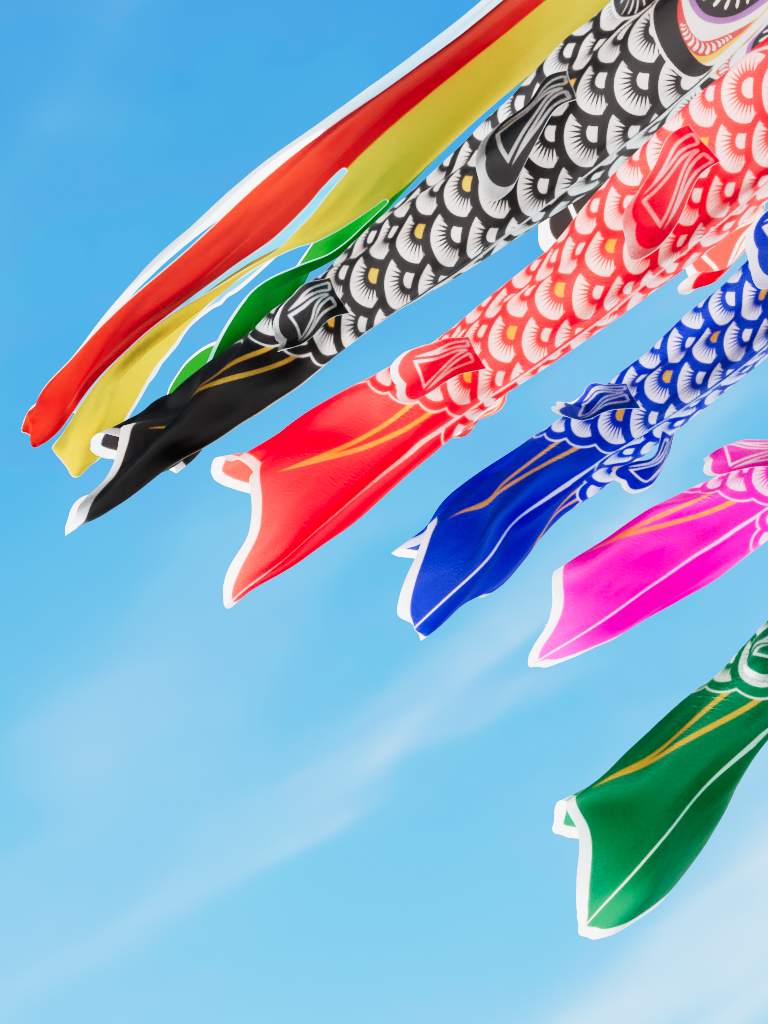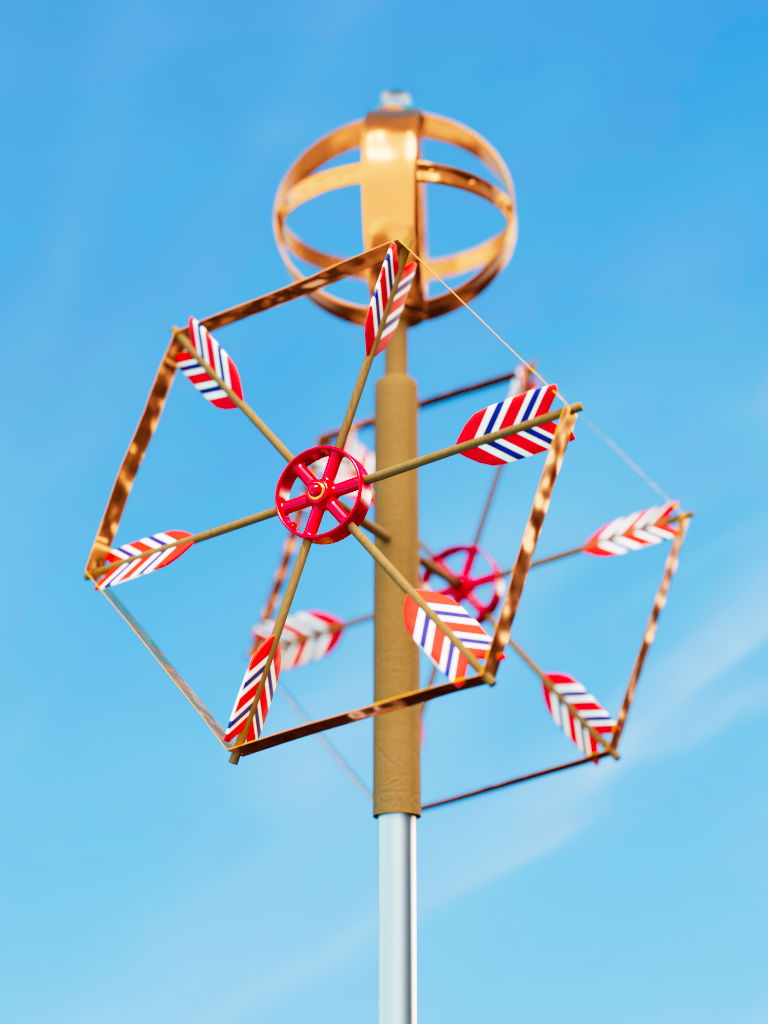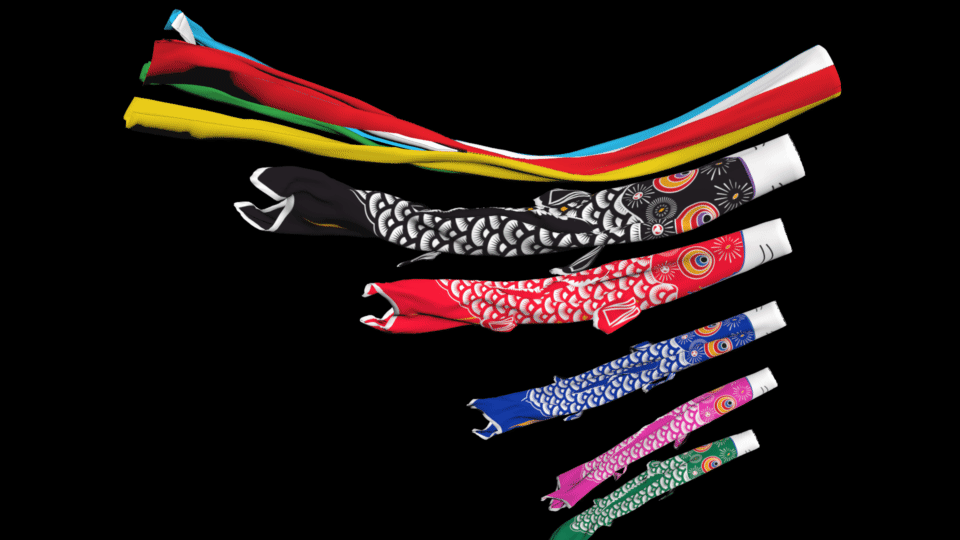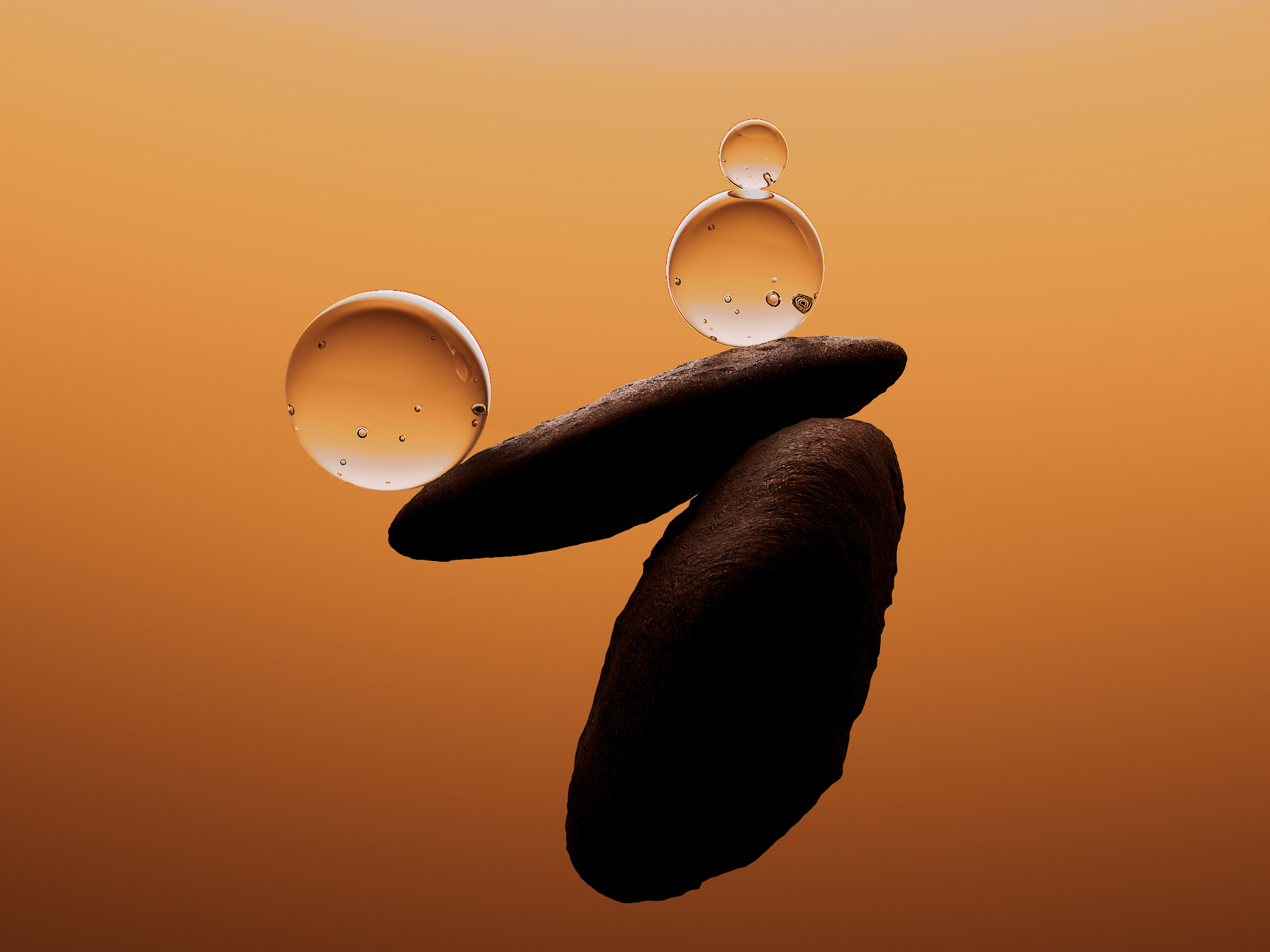
Koi Kinetics
Exploring Japanese Traditions: Koinobori
This project is a modern artistic exploration of the beloved Japanese tradition of Koinobori, the vibrant carp-shaped wind socks flown annually on Children's Day. Through an intricate blend of digital techniques, it brings new life to this cultural icon.
Crafted with meticulous detail, each koi was carefully designed in Adobe Illustrator, their patterns a vivid array of traditional motifs reinterpreted with a contemporary touch. The true mastery, however, lies in the simulations generated through Houdini's powerful vellum cloth solver.
Here, the koi aren't mere static symbols but seem to undulate and swim through unseen currents, their bodies twisting in a hypnotic dance driven by the capricious winds. It's a mesmerizing celebration of the harmony between ancient aesthetics and cutting-edge technology.
In both stills and animations, this piece captures the quintessence of Koinobori - dynamism, vibrancy, and the timeless allegory of a child's perseverance and resilience.





Shading
Using a high detailed 8k texture for the design, this layer was combined with a high detailed normal map made from a fabric type texture which allowed the koi to have its synthetic nylon look and feel to this. A challenging part of this process was to create the shading as though its a light weight nylon fabric. This was achieved by utilizing redshift's Thin Walled method with SSS turned on. This allowed for the light to pass though a double walled fabric material. However as the distance for the geo was very close to each other, the Global Illumination was running into issues for approximating the trace information. As Redshift's GI defaults to Irradiance Point Cloud this caused the very thin fabric SSS to flicker as it animates. To overcome this challenge changing the GI to Brute Force x Brute Force helps eliminate any flickering which was occurring.




Vector Design
The intricate textures of each koi were meticulously crafted using vector art and traditional Japanese patterns. For the head, stylized chrysanthemum motifs were arranged in overlapping, scale-like layers constructed from simple vector shapes. The scales utilized rectangular "kikkō" shapes found in family crests, distorted and layered to create an undulating fish scale effect. By deconstructing traditional imagery into geometric forms and reconstructing through precise vector paths, a unique fusion of historic aesthetics and modern techniques was achieved. This vector approach allowed perfectly crisp artwork scalable for 3D integration.










Technical Explorations










